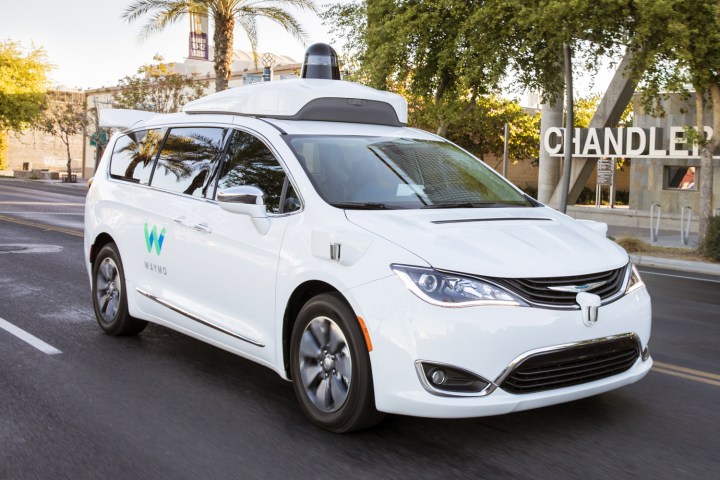
Waymo’s test fleet of self-driving cars continues to rack up mileage on public roads as the Google division works toward launching a commercial ride-hailing service. The Waymo fleet recently reached 8 million miles driven, and is now covering 25,000 miles a day, CEO John Krafcik said on Twitter.
The 8-million-mile mark was reached roughly a month after Waymo’s fleet hit 7 million miles. The fleet has doubled its mileage in just eight months, having hit 4 million miles in November 2017. In addition to testing on public roads, Krafcik said Waymo has covered 5 billion miles in simulations.
Chrysler Pacifica Hybrid minivans are currently the backbone of Waymo’s fleet. The company has inked a deal to purchase up to 62,000 Pacificas over the next few years, representing a rare spot of good news for the Chrysler brand these days. Waymo also has a deal to purchase up to 20,000 Jaguar I-Pace electric SUVs. CEO Krafcik believes Waymo’s autonomous-driving system can be fitted to different vehicles for different jobs, just as a human driver can transition from vehicle to vehicle.
Waymo currently tests its self-driving cars in California, Arizona, Texas, Georgia, Michigan, and Washington state. Most testing occurs in California, where Waymo and parent Google are based. But the switch from testing to commercial operations will start one state over.
Waymo self-driving cars will be used in a ridesharing service launching in Phoenix, Arizona, later this year. Vehicles will initially be limited to designated areas of the city, but Waymo plans to expand the area of operations and possibly add more cities in the future. Arizona has among the most permissive autonomous car laws of any state, which may have played into Waymo’s decision to launch its service there, rather than in its home state of California.
While Waymo still won’t discuss a specific launch date for its ridesharing service, it may become the first company to deploy autonomous cars in a commercial application in the United States. General Motors has said it will launch an autonomous production model with no manual controls in 2019, possibly for an autonomous ridesharing service, while Uber is still reeling from a fatal crash involving one of its test cars earlier this year.
Editors' Recommendations
- Tesla Autopilot vs. full self-driving: What’s the difference?
- Dubai Police to deploy driverless patrol cars with AI smarts
- Cruise autonomous vehicle drives over woman just after she was hit by another car
- An autonomous car in San Francisco got stuck in wet concrete
- Waymo taps the brakes on its autonomous-trucking project


